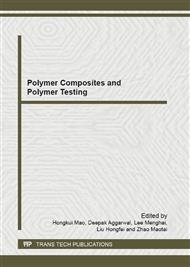p.322
p.327
p.331
p.335
p.340
p.344
p.350
p.355
p.360
A New Numerical Analysis for Inclined Crack in an Infinite Plate
Abstract:
This paper presents a numerical approach for modeling multiple crack fatigue growth in a plane elastic infinite plate. It involves a generation of Bueckner’s principle, In the numerical simulation, for each increment of crack extension, remeshing of existing boundaries is not necessary. Crack extension is modeled conveniently by adding new boundary elements on the incremental crack extension to the previous crack boundaries. At the same time, the element characters of some related elements are adjusted according to the manner in which the boundary element method is implemented. Fatigue growth of an inclined crack in a infinite plate under cyclic load is modeled to illustrate the effectiveness of the numerical approach.
Info:
Periodical:
Pages:
340-343
Citation:
Online since:
April 2012
Authors:
Price:
Сopyright:
© 2012 Trans Tech Publications Ltd. All Rights Reserved
Share:
Citation:


